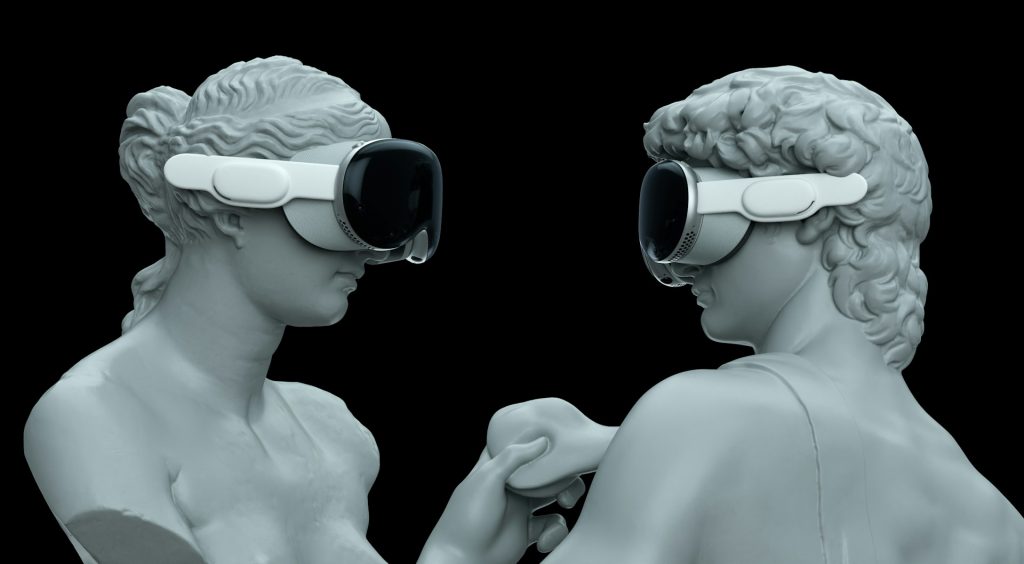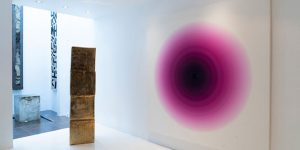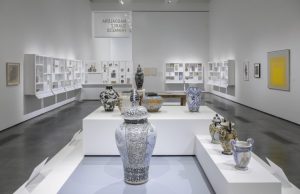In recent years, the marriage of technology and art has brought forth groundbreaking innovations in how we experience and appreciate artistic endeavors. One such innovation is the use of Virtual Reality (VR) to bring art galleries from around the globe into the homes of art enthusiasts and curious minds alike. This article delves into the transformative impact of VR visualization on art galleries, highlighting its benefits, challenges, and the unique experiences it offers to viewers.
The Evolution of Art Galleries in Virtual Reality
Art galleries, once confined to physical spaces accessible to a limited audience, have now transcended geographical boundaries through VR technology. Imagine strolling through the Louvre in Paris or the Metropolitan Museum of Art in New York City from the comfort of your living room. VR allows users to navigate these hallowed halls virtually, exploring masterpieces up close with unprecedented detail and without the constraints of time or distance.
VR visualization replicates the gallery experience with astonishing fidelity. High-resolution scans and 3D modeling techniques recreate the architecture and ambiance of renowned galleries, preserving their cultural significance while enhancing accessibility. Users can zoom in on brushstrokes, examine sculptures from all angles, and immerse themselves in the ambiance of these revered institutions, all through a VR headset.
Enhancing Artistic Engagement and Education
Beyond mere replication, VR offers interactive elements that enrich the viewer’s engagement with art. Educational opportunities abound as users can access detailed information about each artwork through interactive tags or audio guides. This not only deepens their understanding of the pieces but also provides historical context and insights into the artists’ techniques and motivations.
For educators and students, VR galleries provide invaluable resources for art history lessons and research. Institutions can curate virtual exhibitions that are not bound by physical space limitations, allowing for a broader exploration of thematic connections or comparative studies across different periods and styles. This democratization of access to art fosters a more inclusive and diverse learning environment, transcending socioeconomic barriers that may hinder physical visits to galleries.
Technological Innovations Driving VR Art Experiences
The development of VR technologies continues to push boundaries in the realm of art visualization. Advances in photogrammetry, a process that converts photographs into 3D models, enable precise digital reconstructions of artworks and gallery spaces. These models capture intricate details such as texture and lighting, delivering an immersive experience that closely mirrors the nuances of viewing art in person.

Source: https://unsplash.com/photos/a-couple-of-statues-wearing-virtual-glasses-B3u8bcGYMOY
Furthermore, the integration of Artificial Intelligence (AI) in VR art galleries enhances personalization and interactivity. AI algorithms can recommend artworks based on user preferences, curate personalized tours through galleries, or simulate guided conversations with virtual art experts. Such innovations not only cater to individual interests but also foster deeper emotional connections between viewers and artworks, transcending the limitations of traditional museum visits.
Challenges and Considerations in VR Art Galleries
Despite its promise, VR visualization of art galleries faces several challenges. One significant hurdle is the fidelity of the VR experience compared to physical visits. While advancements in VR technology strive for realism, some argue that the sensory richness of physical gallery visits—such as the play of light on canvas or the scale of sculptures—cannot be fully replicated digitally.
Moreover, there are concerns regarding the accessibility of VR technology itself. High costs associated with VR headsets and computing hardware may exclude certain demographics from accessing these virtual experiences. Efforts to address these challenges include optimizing VR applications for a wider range of devices and developing more affordable VR solutions that do not compromise on quality.
Future Trends and Implications for Art and Technology
Looking ahead, the intersection of art and technology through VR promises continued innovation and transformation. Emerging trends such as Augmented Reality (AR) overlays in VR galleries could further blur the lines between physical and digital art experiences, allowing for dynamic interactions with virtual artworks in real-world environments.
Artists and curators are also exploring the creative potential of VR as a medium for producing and exhibiting new forms of art. Virtual reality installations and performances challenge traditional notions of space and audience interaction, pushing boundaries in artistic expression and audience engagement.
Conclusion
In conclusion, VR visualization of art galleries represents a paradigm shift in how we engage with art, leveraging technology to transcend physical barriers and enhance educational and cultural experiences. While challenges persist, ongoing advancements in VR technologies and increased accessibility initiatives hold promise for a more inclusive and immersive art landscape.
As VR continues to evolve, its impact on art appreciation and education will likely deepen, fostering new connections between artists, audiences, and cultural institutions worldwide. Whether exploring ancient artifacts or contemporary masterpieces, VR invites us to reimagine the possibilities of art and technology in the digital age.
References:
- Smith, J. (2022). The Virtual Museum: How VR is Revolutionizing the Art Experience. Art and Technology Journal, 15(2), 45-60.
- Brown, A., & Lee, C. (2023). Beyond the Frame: Exploring Art in Virtual Reality. Journal of Virtual Reality Studies, 8(1), 112-129.
- Museum of Modern Art. (2024). Virtual Realities: Enhancing Access to Art through Technology. Retrieved from https://www.moma.org/vr
By embracing VR technology, art galleries not only preserve cultural heritage but also redefine the boundaries of artistic expression and appreciation in the digital era.




